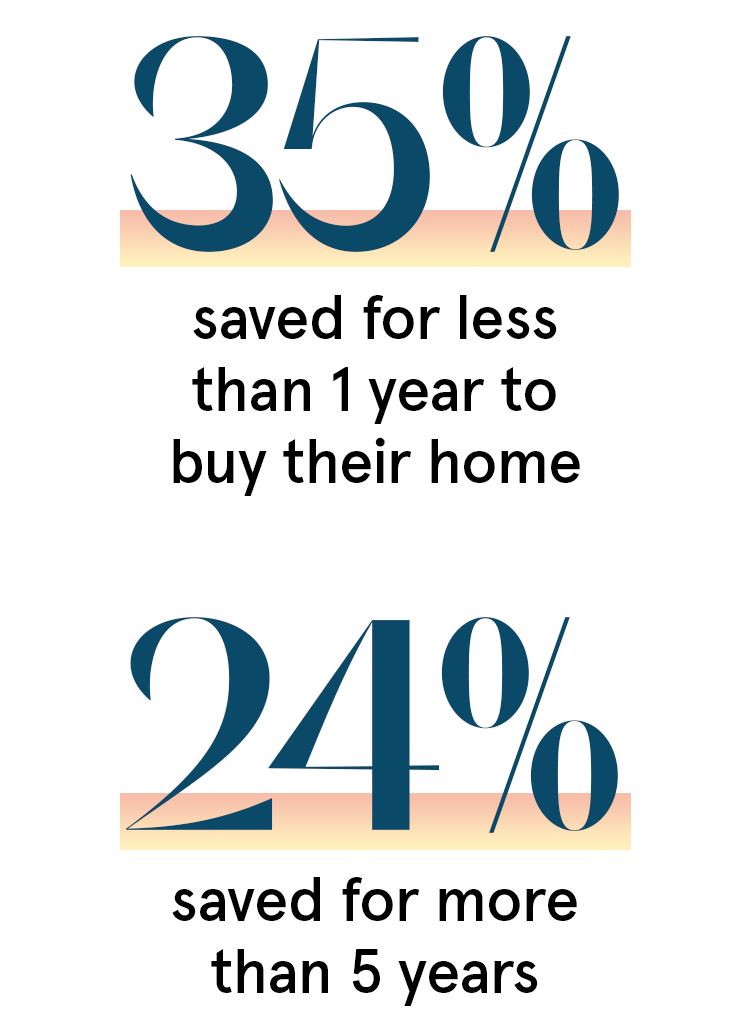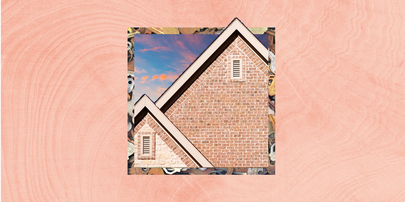How to Afford a Home
There are a lot of loan programs and grants—especially for first-time buyers.


If you’re an aspiring first-time homebuyer, you know that saving for a down payment goes far beyond skipping the avocado toast and pausing your Netflix account. Perhaps you’re early in your career, and there simply isn’t much left over to put into savings each month. Or, your rent keeps going up (like way up) year-after-year, hampering your ability to squirrel money away into your down payment fund. Or, you had to dip into your savings to pay for a medical bill.
The scenarios are endless and, no doubt, there are plenty of challenges that can make homeownership feel out of reach. But, the good news? There are lots of loan options, grants, tax incentives, and other savvy financial strategies designed to help you become a homeowner.
Here, a look at how you can afford to buy a house, even—actually, especially—if you don’t have 20 percent saved for a down payment or perfect credit or aren’t one-half of a two-income household.
Budget for PMI
You’ve probably heard that 20 percent down is the gold-standard when it comes to purchasing a home. But, it’s not the norm, especially for first-time homebuyers. According to a report from the National Association of Realtors, first-time homebuyers who financed their homes put down an average of 7 percent. In fact, in an original survey of single female homebuyers conducted by Marie Claire and House Beautiful, 60 percent of respondents said they put down 10 percent or less.
Still, a major perk of putting down 20 percent is avoiding Private Mortgage Insurance, or PMI. “PMI is insurance on your mortgage that the lender requires you to purchase in order to protect them if you default on the loan,” explains Lauren Anastasio, a certified financial planner at SoFi, a personal finance company. “It’s insurance for the lender, not for you.”

Typically, PMI costs between 0.5 percent and 1 percent of your mortgage loan amount on an annual basis, paid monthly. As an example, if you’re paying 0.5 percent PMI on a $300,000 loan, you’d be paying an extra $1,500 a year or $125 a month.
In many cases, PMI is something that eventually drops off. Be sure you understand your loan terms, Anastasio says. “Some mortgages will drop the PMI requirement once you obtain 20 percent equity in the home, and your monthly payment will go down for the remainder of your term,” she says. “Other mortgages may require 10 years’ worth of PMI payments even if you reach 20 percent equity sooner, and others may require it be paid for the life of the loan.”
Get exclusive access to fashion and beauty trends, hot-off-the-press celebrity news, and more.
The takeaway: It’s possible to afford a home, even without ponying up 20 percent. When you’re budgeting, factor in costs like PMI, homeowner’s insurance, HOA dues, property taxes, and an emergency repair fund. Calculating these combined expenses is an exercise your lender can help with. Learn more about all the unexpected costs of owning a home here.
Explore your loan options
As a first-time homebuyer, you should have a conversation early on about your unique loan circumstances with a lender, says Sierra Hudson, licensed mortgage advisor in Georgia and branch manager at Angel Oak Home Loans. During this conversation, you’ll want to discuss your credit score, how much you cash you can put toward a down payment, your salary and other sources of income, how much debt you have, and what career field you’re working in. All of this information can help a lender guide you to a loan that best fits your circumstances, Hudson explains.
“These days there are loan programs to fit most homebuyers,” she says. If you are self-employed, for instance, there are bank statement loans just for self-employed people. Talk to a lender about conventional financing, and don’t overlook loans from Veteran’s Affairs (VA), Federal Housing Administration (FHA), and the United States Department of Agriculture (USDA).
If these loan programs aren’t a fit, though, you’ve still got options, says Jeremy Sopko, CEO of Nations Lending, a mortgage company that’s licensed to lend in 47 states. Each state has its own set of down payment assistance programs, all with varying sets of criteria for qualifying, he explains. Some counties and municipalities even have their own programs to help first-time homebuyers.
“If you qualify, you can sometimes get grant money toward your down payment that is basically free money from the government,” Sopko says. In other cases, the incentives include better loan interest rates.
The bottom line: There are a lot of incentives and grants out there. “Your mortgage professional should be in the know about them, so if you ask: ‘What Down Payment Assistance (or DPA) programs are available to me?’ they should be able to point you in the right direction,” Sopko says. If you’d like to research this on your own, check with your state’s housing finance agency.
You may have heard about a federal, first-time home buyer tax credit. The credit was implemented during the Obama administration, but is no longer available. While not the same as a tax credit, homeowners may be able to take a mortgage interest tax deduction that could potentially cut their tax bill down.
Decide on loan terms
As you’re exploring loan options, you’ll also need to decide whether you want to go with a fixed-rate or an adjustable-rate mortgage. Fixed-rate mortgages are by far the most popular route, with more than 95 percent of buyers currently opting for them, according to loan origination data from Ellie Mae, a software company that processes mortgages. Fixed-rate mortgages mean no surprises: Your mortgage payment will remain the same throughout the life of your loan.
Adjustable-rate, or floating rate, mortgages, on the flip side, offer low introductory rates and then the rates reset after a certain period. For example, a 5/1 ARM means that your mortgage interest rate is locked for five years and then is subject to adjustment on an annual basis.

When interest rates are low, it’s a good idea to lock in a fixed-rate mortgage so that you’re not subject to rate increases in three, five, seven, or however many years are set forth in an adjustable-rate scenario, Sopko explains. Still, in certain cases this could be right for you. You might consider an adjustable-rate mortgage, for example, if you’re certain you’ll be moving within the introductory period before the rates reset. About 6 percent of our survey respondents chose a floating-rate mortgage.
You’ll also need to decide whether you want to take out a 30-year mortgage or a 15-year mortgage. Thirty-year mortgages, which are more popular, are paid off over the course of 30 years while 15-year mortgages, unsurprisingly, are paid off in 15. While monthly payments are lower on 30-year mortgages, it means paying more in interest than with a 15-year mortgage. It’s more difficult to qualify for a 15-year mortgage because the higher monthly payments.
If you’re custom-building a home or buying an under-construction home in a newly built subdivision, you’ll likely have some additional financing steps and options. A construction loan, which is a short-term, higher-interest loan, is typically used to cover the cost of building a home if you’re building it yourself or hiring a custom builder. If you’re buying in a newly developed subdivision, you may have access to builder financing—3 percent of our respondents used this. Many large builders have mortgage subsidiaries or affiliate relationships with mortgage companies and offer financing options to buyers, which may come with some incentives. Still, you’ll want to shop around with other lenders and compare loan terms, like origination fees and interest rates.
Financial gifts
Even with all these options, you may be wondering: I’m still not sure how I could afford a house; how are my co-workers or peers? It’s a fair question!
As it turns out, many first-time home buyers are relying on gifts from family members or friends, who give them money towards the down payment. In our survey, just under one-fifth of respondents said they got money from their family to help buy their home. According to a 2019 report from the National Association of Realtors, 28 percent of buyers under the age of 28 relied on a financial gift to help pay for their down payments. Overall, 12 percent of home buyers received a gift.
It’s important to note that this can’t be a loan (lenders don’t want you over-extending yourself); rather, it’s no-strings attached money towards the down payment. Lenders will require a “gift letter” to confirm the money coming from your family or friends isn’t a loan.
While this may not be viable for every home buyer, getting a little help from your rich uncle or grandparents could help shore up your down payment.
For more stories like this, including celebrity news, beauty and fashion advice, savvy political commentary, and fascinating features, sign up for the Marie Claire newsletter.
Related Stories

